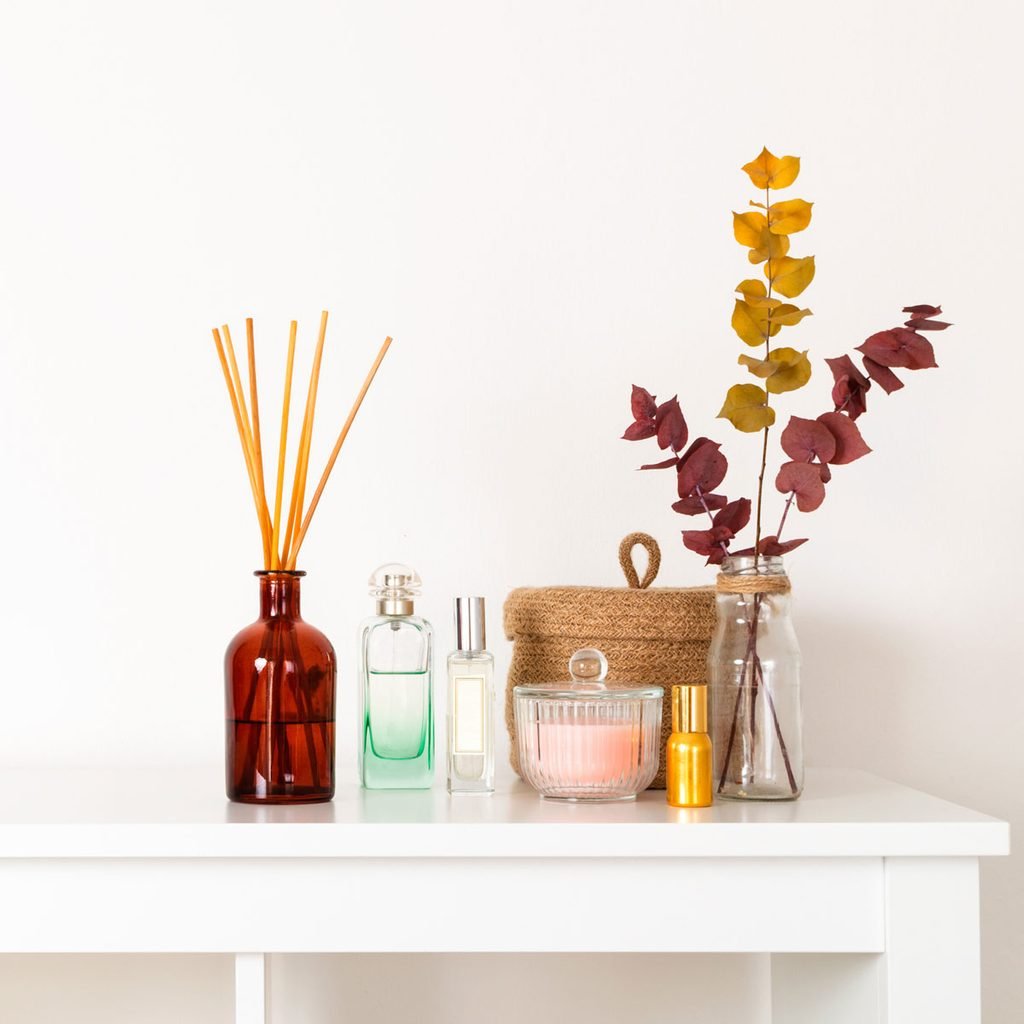Types of Air Fresheners and the Odors They Best Treat
Updated: Mar. 18, 2024

Sprays, solids, candles — not all air fresheners are created equal. Find out how different types work to combat common household odors.
Our editors and experts handpick every product we feature. We may earn a commission from your purchases.
Whether it’s burnt popcorn, a smelly dog or something worse, unpleasant odors have no place in our homes. A grocery store aisle full of air fresheners, including sprays, plug-ins and candles, all claim to eliminate common household odors — malodors, in scientific terms. But do they banish the bad smells or just cover them up?
Air fresheners feature various technologies and a range of efficacies, according to Steve Horenziak, a research fellow at Proctor & Gamble. “Some work by using perfume to cover an odor, while others chemically bond to the odor molecules so that they evaporate more quickly,” he says. Their effectiveness, he says, depends on what kind of odors you’re tackling.
Here’s a look at some of the most common air freshener types, and what odors they control best.
On This Page
Aerosol Sprays
Aerosol fresheners are the malodor equivalent of calling 911 — a fast way to solve an urgent odor problem. They usually contain a higher concentration of perfume, which can cover a bad smell in a large area. Some just cover smells with perfume, while others contain baking soda and other odor-neutralizing ingredients.
When to Use: After a kitchen mishap, such as burnt bacon, or an, um, unfortunate bathroom incident.
Try These:
- Ozium Air Sanitizer & Odor Eliminator traps odors and has a light perfume. It’s especially recommended for eliminating tobacco smoke.
- Arm & Hammer Baking Soda Air Freshener eliminates bad smells by bringing malodor molecules to neutral pH.
- Glade Air Fresheners are available in a wide range of scents, suited for those who prefer fragrance to cover malodors.
Pump Sprays
Trigger sprays work well for textiles and porous surfaces. These sprays penetrate the fabric and work on a molecular level to surround malodor molecules and essentially block them from dispersing, Horenziak says. Those with sodium citrate — a mix of sodium bicarbonate and citric acid — are especially effective at creating neutral pH and eliminating stink.
When to Use: On a stinky dog bed or curtains that reek of cigarette smoke.
Try These:
- Febreze Air Refresher contains cyclodextrins, ring-shaped molecules that trap malodor molecules in their center.
- Defunkify Odor Remover Spray uses natural oils and ionic silver — especially good for smelly shoes, dog beds and other bacteria pits.
- The Poo-Pourri line of “spray before you go” toilet sprays use natural ingredients to cover up bathroom odors.
Plug-Ins
Air freshener plug-ins are considered “continuous products,” says Horenziak, because they emit a steady dose of fragrance — at least until they need a cartridge change. He says they’re a good solution if you’re looking for “ambient, long-term reassurance.”
A nice feature of plug-in products is that the refills come in a wide range of scents, so you can change fragrances from room-to-room or season-to-season. (Fun fact: Vanilla is the most universally accepted fragrance, according to Horenziak, who smells odors in a lab for a living.)
When to Use: To offset lingering malodors like cooking, pet and tobacco, or if you just enjoy an ongoing pleasant scent.
Try These:
- Febreze Plugs, available in various scents, is the only plug-in we could find with ingredients to block and eliminate odors, too.
- Air Wick Warmers emit scented essential oils. The strength of the scent is adjustable.
Gels and Solids
Simply sit it on a table or counter or hide it discreetly next to the toilet. Like plug-ins, gels and solids are continuous products that emit a pleasant cover-up smell. Their gel or solid material eventually evaporates and the product has to be refilled or replaced.
When to Use: To keep any room fragrance-filled — good for bathrooms and closets, too, or spaces with no electrical sockets.
Try These:
- Renuzit is a long-standing solid air freshener, available in a range of scents. Each solid cone lasts about two weeks.
- Fresh Wave Odor-Removing Gel lasts for 60 days and uses plant-based products to neutralize odors. It’s also pet-safe.
Candles and Wax Melts
Scented candles are favored by people who “want a scent experience,” Horenziak says — they just like the ambiance and perfumy effect of a scented candle burning in the home. These, along with wax melts, help cover odors, but they’re more about a short-term ambient smell. (By the way: Lighting a match in the bathroom only covers up bad odors. It doesn’t magically “burn” them away!)
When to Use: To give your house or room a noticeably fragrant smell.
Try These:
- Mrs. Meyer’s Aromatherapy Candle is made from soy-based wax and has a fresh lemony smell.
- Glade Candle Jar candles blend two or more scents for a fragrance-heavy experience that lingers after the candle is blown out.
- Febreze Wax Melts pack a powerful fragrance punch, suitable for eliminating airborne odors.
